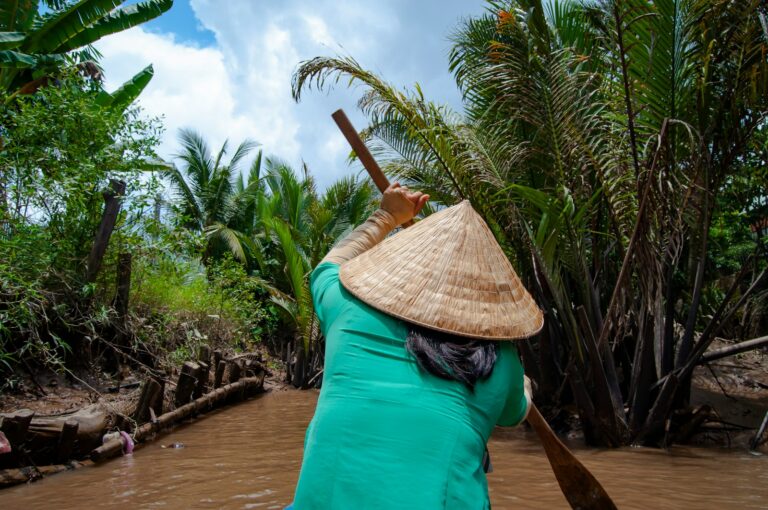Cambodia: The Beautiful Land Haunted by Toul Sleng
Cambodia is a country of breathtaking beauty. Travelers often come here seeking the majestic temples of Angkor Wat, the laid-back vibe of riverside towns like Kampot, or the warm hospitality of Khmer people. Yet, hidden behind the smiles and landscapes is a chapter so dark, so haunting, that it can never be forgotten. This is the story of Toul Sleng – a place where beauty and horror exist side by side.

Toul Sleng, a name that translates to “Poison Hill,” is now a museum in Phnom Penh. But before it became a museum, it was a prison. Before it was a prison, it was a school. And between those moments, it became one of the darkest symbols of Cambodia’s tragic past under the Khmer Rouge regime.
Tuol Sleng, a former Phnom Penh high school transformed by the Khmer Rouge into Security Prison 21 (S-21), stands as a harrowing memorial where over 20,000 prisoners were brutally interrogated and tortured before being sent to execution, with only a handful known to survive.
You wouldn’t guess its past just by walking by. The building looks like many others in the capital. Children still play in the courtyard. Trees grow quietly, casting shade on the old walls. But once you step inside, you begin to feel the weight of what happened here.
Back in the mid-1970s, Cambodia was taken over by the Khmer Rouge, led by Pol Pot. Their vision was extreme: they wanted a purely agrarian society, free from outside influence, money, religion, education, even families. So they began to “purify” their society by eliminating anyone they saw as a threat—intellectuals, professionals, teachers, artists, or even people who wore glasses. They emptied the cities and forced millions into the countryside to work in brutal labor camps. Among the worst places to end up was Toul Sleng, also known as S-21.
Toul Sleng became a center for imprisonment, torture, and execution. An estimated 20,000 people passed through its gates, but only a handful survived. One of those survivors is Mr. Bou Meng.
Bou Meng was not a soldier or a politician. He was a painter. One day, while he was imprisoned, a young Khmer Rouge guard entered his cell holding a photograph of Pol Pot and asked, “Who here can paint this?” Bou Meng, sensing a lifeline, raised his hand. His ability to draw saved his life. He was ordered to paint portraits of the regime’s leaders and guards. Day after day, he did as he was told, while many others were tortured or taken away to be killed.
Today, Bou Meng is in his 70s, and he still returns to Toul Sleng to tell his story. He stands before visitors, his voice steady, his eyes calm. He speaks without anger, without tears. The pain, it seems, is too deep for display. His family was killed. His friends disappeared. And yet, he chooses to come back to this place of horror—not to relive his trauma, but to bear witness.
One foreign visitor stood listening as Bou Meng spoke. She didn’t say a word, only watched him with tearful eyes. Around them, the museum walls displayed hundreds of black-and-white photographs of former prisoners. Some were children. Some were women with cropped hair and blank expressions. All of them, like Bou Meng once was, were victims of a regime that turned cruelty into policy.
As you walk through the museum, the rooms whisper stories. The metal beds with shackles are still there. The blood-stained floors have been cleaned, but the memories remain. You see paintings made by Bou Meng and the other artist who survived. They show scenes of torture so horrific you want to look away, but feel compelled to keep staring. You walk past small cubicles, only a meter wide, where prisoners were crammed together in darkness. You see graves in the courtyard—14 bodies found in the last days of the regime, hurriedly buried as the Khmer Rouge fled.
The brutality extended beyond the prison walls. Many prisoners were later transported to the outskirts of the city, to the now-infamous Killing Fields. There, mass graves tell the story of a people who were murdered by their own. Some graves are marked with chilling names: “Grave of 100 Babies and Mothers,” “Grave of 87 People Missing Hands or Legs.” Other graves remain anonymous, their stories lost forever. Skulls from the Killing Fields are displayed inside the Toul Sleng museum, a stark reminder of what happened when hatred and paranoia are left unchecked.
What strikes most visitors is the sense of silence that hangs over the museum. It’s not just a quiet building—it feels as if the air itself remembers. The frangipani trees in the yard bloom, but they do so above a history soaked in suffering. Jackfruit trees give fruit near the same walls where cries of pain once echoed. There is a deep contradiction in seeing beauty bloom in a place once filled with death.
Cambodia’s suffering only lasted four years under the Khmer Rouge, but its impact still lingers. A quarter of the population died—an estimated 1.7 to 2 million people—through starvation, forced labor, and mass executions. Some historians say the Khmer Rouge was even more brutal than Nazi Germany, because unlike Hitler’s regime, Pol Pot’s regime killed its own people.
Even now, justice remains incomplete. International trials to bring Khmer Rouge leaders to justice have stretched for years, plagued by political delays and global hesitancy. Some countries, perhaps out of embarrassment or guilt, have resisted fully supporting these efforts. And there are still Cambodians, especially in rural areas, who speak softly when you mention the name Pol Pot, afraid or unsure of how to process the past.
But not everyone is silent. Cambodian leaders like Prime Minister Hun Sen have openly thanked Vietnam for intervening and ending the nightmare. When Vietnamese volunteer soldiers and Cambodian revolutionary forces stormed into Phnom Penh in early 1979, they liberated Toul Sleng. They found only seven survivors. The rest had been tortured or executed. They took photographs of the corpses still chained to beds, and those images now hang on the museum walls.
In the years that followed, even former King Norodom Sihanouk, returning from exile, credited Vietnam with saving countless Cambodian lives. He said so before an international press conference attended by hundreds of journalists. Yet, the political complexity of the war, the alliances, and the fears of the Cold War meant that justice has often taken a back seat to diplomacy.
As a traveler in Cambodia, it’s important to experience both sides of the country—the stunning beauty of its temples, and the heartbreaking truth of its history. Visiting Toul Sleng is not easy. It’s not meant to be. You leave with more questions than answers. How could a regime of educated men commit such horrors? Why did the world look away for so long? And how do the Cambodian people find the strength to smile after all they’ve endured?
In the end, Toul Sleng is not just a museum. It’s a monument to resilience, a reminder that even in the darkest chapters of history, there are those who survive—not just to live, but to tell the story, so that it never happens again.
So if you ever find yourself in Phnom Penh, go see Angkor Wat, take a boat ride down the Mekong, try the local dishes. But also, take a quiet morning to visit Toul Sleng. Walk slowly. Look closely. And listen. The stories are waiting.

Flowing majestically from Laos into Cambodia’s northeast, the Mekong River is the country’s pulsating artery.


